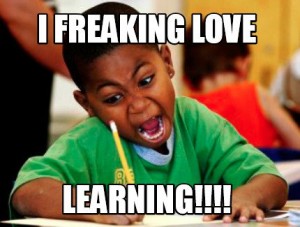The Learning Theories
In class this past week we learned a lot about two of the different types of learning theories. The first being the biological approach, and the second one the cognitive approach. Digging deeper into them helped me gain an understanding of how I can implement both or just one of the approaches into my future classroom.
What are the main differences between these two approaches?.. According to Woolfolk (2014), “The cognitive view, knowledge and strategies are learned, then changes in knowledge and strategies make behavior possible. According to the behavioral view, the new behaviors themselves are learned” (p. 312). One of the main differences that I noticed during our lectures was that there was more reinforcement when it came to the behavioral approach. They do both use reinforcement, but behavioral approach uses it more. As teachers, why is it important that we apply these perspectives of learning into our instruction? There are many reasons why it is important, however as teachers we are constantly teaching our students new information. For instance, younger children need to learn proper manners. It was shown to us that the BOBO doll experiment that Albert Bandura conducted, that children who were showing aggression toward the doll were the ones who watched the adult before them be aggressive as well. This is a learned behavior. The cognitive approach will work well with older students who need to know a lot of new information, but that is being built upon older information already stored. Although these approaches to learning are important, they both have their limitations. It is explained in Woolfolk (2014) that rewarding students with learning could actually make them uninterested , and it could even cause them to have behavior issues in the classroom. The limitations with the cognitive approach could just be the fact that you are learning so much that it is overloaded into your brain and you don’t actually remember as much. As a future high school educator I believe that my classroom will benefit most from the cognitive approach to learning. I want them to be able to gain a deeper understanding of what they are learning, and be able to take the learning strategies I teach them through college, and the rest of their lives. When it comes to where I fall as an educator within the views of learning, again I would have to chose the social cognitive theory. I want my students to be able to take what they have learned in my classroom, and apply it to the real world. Ways that I can do this include a few of the following ideas. If I were teaching elementary students I would use a program called “My Classroom Economy”. This program is designed to help students learn responsibility, and money techniques. Each week a student is assigned a job, and they must do the job until the end of the week when they get paid. At the end of a month you can create a store where the students can spend the money that they earned. In a high school setting I would really like to incorporate Saundra McQuire’s successful learning strategies. I would be able to do this by making guided notes for my students, or just having them take in depth notes on their own, using the SQ5R meathod.
It is really interesting to learn more about how I can implement the different learning strategies into my future classroom, and I can’t wait to put them to practice one day.
If you’re at all interested in learning more about the My Classroom Economy program you can click on the link below :
https://www.myclassroomeconomy.org/
Filed under Uncategorized | Comments (7)
